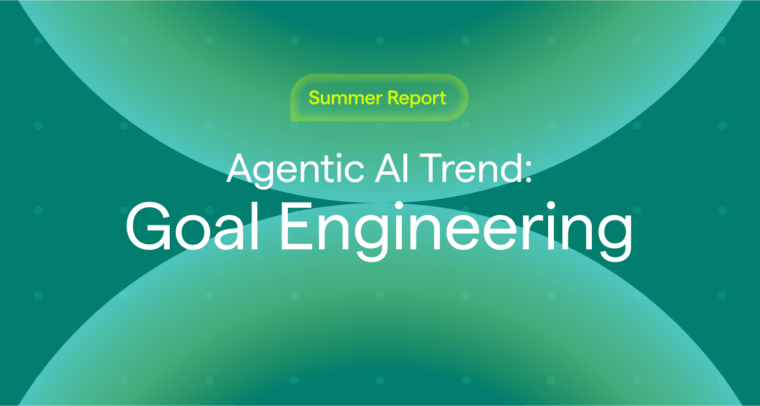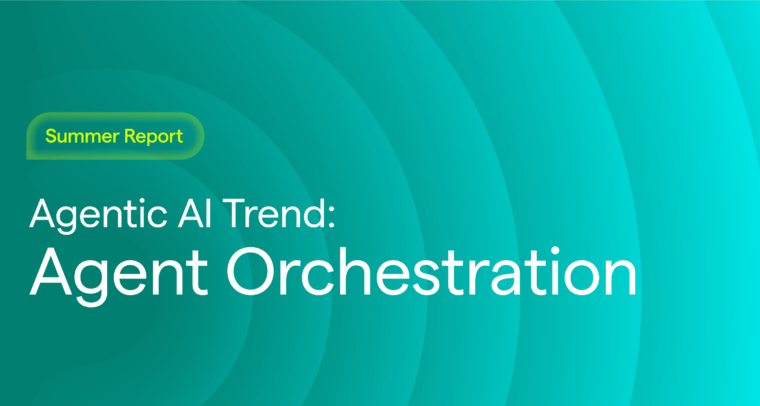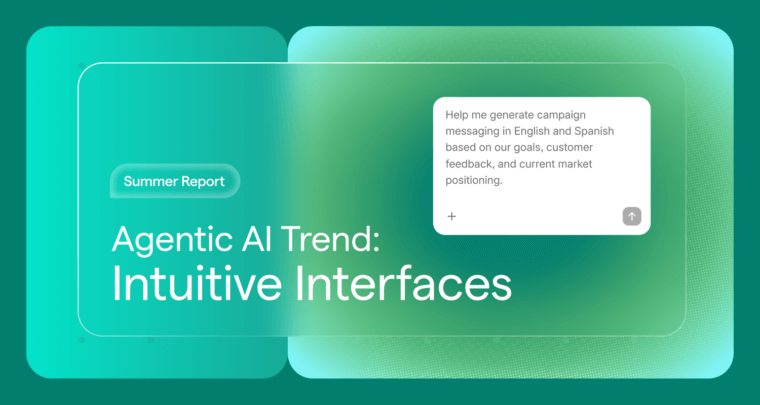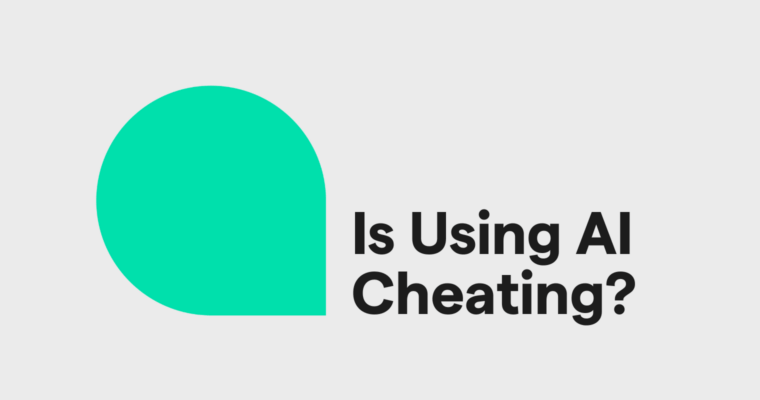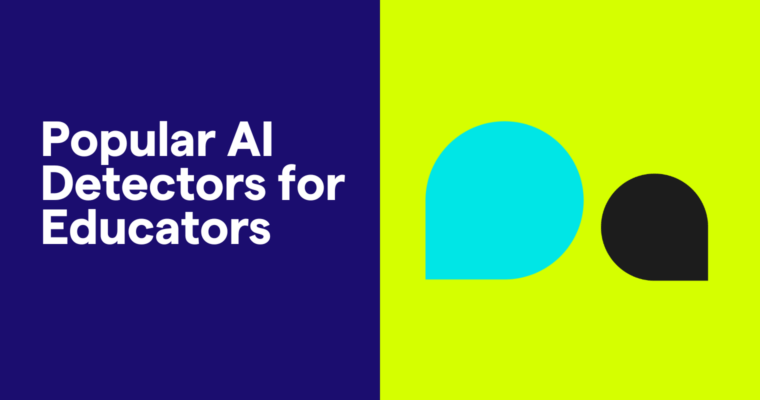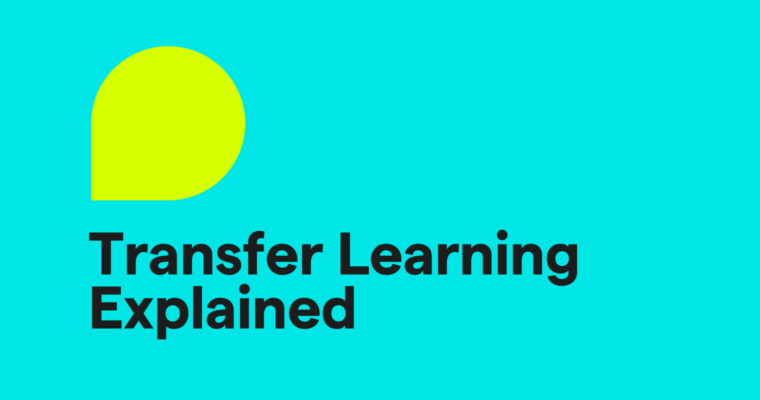
Reusing and adapting pre-trained AI models is changing how machine learning (ML) tasks are approached. Transfer learning is an efficient and cost-effective method to adapt large and complex AI systems to new domains and problems. In this guide, we’ll explore the key aspects of transfer learning: how it works, its various types and applications, and its advantages and challenges.
Table of contents
How does transfer learning work?
Transfer learning vs. fine-tuning
Challenges of transfer learning
Applications of transfer learning
What is transfer learning?
Transfer learning is a powerful machine learning technique that leverages a pre-trained model for a different but related task. It uses general knowledge captured in an existing model as a foundation to learn how to solve problems in more specific, related domains.
Transfer learning offers several advantages: It accelerates the development and deployment of customized artificial intelligence (AI) applications, lowers resource costs, and often delivers better performance than building a model from scratch. As a result, transfer learning is particularly valuable for organizations aiming to develop specialized AI solutions without the vast amounts of data or computational power typically required to train a model from scratch.
Example of transfer learning
Consider the example of a manufacturer who wants to create an AI system to detect product defects. One option is to hire specialized ML practitioners, collect and curate millions of relevant product images, and set aside the time and computational resources necessary to train a model from scratch. Transfer learning presents a much better option: The manufacturer can instead start with a model that has already completed expensive and time-consuming training on a large, standardized image dataset, such as ImageNet. The manufacturer can then quickly and efficiently use transfer learning to adapt the model to detect defects in specific product images.
How does transfer learning work?
Transfer learning adapts a pre-trained model’s general knowledge to a new, related task. The process typically involves three key steps:
- Selecting an appropriate pre-trained model
- Updating the model’s architecture
- Training the model on new data
1. Select a pre-trained model
The first step is choosing a model that has already been trained on a dataset in a domain related to the target task. The pre-trained model should have learned general and high-level features relevant to the new application.
- Example in healthcare: A healthcare organization might start with a model pre-trained on the NIH (National Institutes of Health) ChestX-ray14 dataset, which contains a vast collection of labeled medical images. The model would have learned general features such as how X-ray images are structured and how biological properties correlate to image components. This model can serve as the foundation for developing diagnostic tools for specific conditions located in the chest area and visible on X-ray images, like pneumonia or lung cancer.
- Example in finance: A finance enterprise might use FinBERT, a model pre-trained on financial documents, earnings calls, and regulatory filings. The model would have learned general features such as the structure of financial language and specific terms indicating market sentiment and business performance. The FinBERT model could serve as a foundation for more specialized functionality, such as automatically flagging concerning statements in earnings reports.
Selecting the right pre-trained model involves ensuring that its original training aligns well with the intended application, as this increases the likelihood of successful adaptation.
2. Modifying the model architecture
Once a suitable pre-trained model is selected, its architecture is adapted to suit the new task. This step typically includes:
- Replacing the output layers: The final layers of the pre-trained model, designed for the original task, are removed and replaced with new task-specific layers (e.g., fully connected layers for classification).
- Retaining general features: The inner layers, which capture generalizable patterns like edges in images or linguistic relationships in text, are often preserved. These features can transfer effectively to related tasks.
The extent of architectural modification depends on the specific use case and the degree of similarity between the source and target tasks.
3. Training the model on new data
In the final step, the modified model is trained on a dataset tailored to the new task. This step can be approached in two primary ways, depending on the dataset size and the similarity between tasks:
- Feature extraction:
- Only the newly added layers are trained, while the original layers remain unchanged.
- This method is ideal when the new task is closely related to the original task or when the target dataset is small.
- Fine-tuning:
- The entire model is retrained but with a smaller dataset and learning rate to avoid losing the valuable features learned during the pre-training phase.
- This approach is better suited for large datasets or when the new task differs significantly from the original task.
Regardless of the approach, the goal is to expose the model to sufficient relevant data, enabling it to learn and generalize for the new application effectively.
Transfer learning vs. fine-tuning
Transfer learning is often confused with fine-tuning. While the concepts are closely related, there are notable differences. Most importantly, transfer learning is the overall process of adapting a pre-trained model for a new purpose and may or may not involve fine-tuning. On the other hand, fine-tuning is one of several techniques used to retrain some or all of the model’s parameters as part of the overall transfer learning process. Fine-tuning is not just a subset of transfer learning; it has applications in other contexts in ML outside of transfer learning, such as improving model performance on specific subgroups of data or adapting a model to shifting data distributions.
Additionally, transfer learning usually requires making actual changes to the model’s architecture, such as removing and replacing existing layers or restructuring the connections between layers. In contrast, fine-tuning generally involves small, precise parameter adjustments without significant changes to the architecture.
Think of transfer learning as renovating a building designed for one purpose so that it can be used for another, like converting a garage into an apartment. This would likely involve structural updates like installing windows and insulation or even adding new rooms and utility connections. Fine-tuning, on the other hand, is more like using the garage as an extra workspace without making major changes to the structure. For example, the lights might be replaced, and new shelves might be added, but the overall structure and architecture of the garage remain unchanged.
Types of transfer learning
Transfer learning can take several forms, each suited to specific scenarios. The appropriate type depends on factors such as the availability of labeled data in the target domain, the similarity between source and target tasks, and specific business requirements. The main types of transfer learning are inductive transfer learning, transductive transfer learning, and unsupervised transfer learning. Additionally, modern approaches like few-shot learning and zero-shot learning often leverage transfer learning techniques.
Inductive transfer learning
Inductive transfer learning is the most common type of transfer learning and is used when the target and source tasks are closely related and very different.
Example: A healthcare organization might use transfer learning to adapt a model trained to classify general MRI images to detect specific brain conditions.
In this scenario, the source model’s general visual recognition capabilities transfer well to the target task, but labeled data in the target domain is required. Transfer learning is particularly effective for tasks where new labels are available, but the task itself is distinct from (and usually a more specialized version of) the source.
Transductive transfer learning
In transductive transfer learning, the source and target tasks are the same, but the problem domain is different.
Example: A spam filter trained on English-language emails can be adapted to classify French emails. In this scenario, the source model’s text pattern recognition and understanding of email structure transfer well to the target task, even if the vocabulary and language patterns differ. The task (email classification) remains unchanged, but the data (language) differs. This approach is useful when the source domain has abundant labeled data and the target domain has little or none.
Unsupervised transfer learning
Unsupervised transfer learning is used when labeled data is unavailable in the target domain. Generally, this type of transfer learning is used to train models to perform unsupervised tasks like clustering or dimensionality reduction.
Example: An IT organization might use unsupervised transfer learning to help an AI-powered threat detection system identify new threat types without labeled examples.
In this case, the model can transfer its general understanding of normal patterns versus potential threats to new, previously unknown threat types.
Few-shot learning
Few-shot learning (FSL) is an ML technique that uses transfer learning to help a model learn from very limited data. In FSL, models learn to perform new tasks or classifications using just a few examples.
Example: A facial recognition model can identify a new individual based on just one or two photos.
Zero-shot learning
Zero-shot learning (ZSL) is an ML technique that helps a model learn new classes not seen in training. ZSL often uses transfer learning concepts but relies on semantic relationships and auxiliary information to generalize learned knowledge to new categories.
Example: A model might learn to recognize a tilapia based on its understanding of other types of fish and its knowledge that tilapia are a type of fish despite never having seen a tilapia during training.
Benefits of transfer learning
Transfer learning provides several advantages for organizations seeking to develop tailored AI solutions. These include reduced development and resource requirements, good performance with limited data, and improved model robustness.
Reduced development and resource requirements
Transfer learning is a great way to simultaneously shorten the development cycle and reduce resource requirements for AI applications. Building a model from scratch involves gathering, cleaning, and labeling data—and that’s before training can even begin. With transfer learning, development and deployment become a matter of weeks or even days instead of months. Training a model from scratch often requires significant computational time and power, whereas transfer learning does not. This means that organizations can bring their AI solutions to the market more quickly and with less overhead.
Good performance with limited data
Transfer learning allows models to perform well, even with limited training datasets. This is extremely useful for organizations in specialized fields, like manufacturing or healthcare, where labeled data is hard to find or expensive to procure. For example, a healthcare organization might have only a few hundred labeled examples of specific medical conditions but can use transfer learning to build a performant detection system regardless.
Improved model robustness and reliability
While it may seem unintuitive, models trained through transfer learning often generalize better than models trained from scratch on limited data. This is because the large-scale datasets used for pre-training provide diverse patterns and features that are generalizable to more specific domains and tasks. Additionally, starting with a model that’s already been tested reduces the risk of model failure and increases reliability. This decreased risk reduction is important in regulated industries like healthcare and finance.
Challenges of transfer learning
Despite its many benefits, transfer learning also has several challenges and limitations. Organizations must understand these challenges so that they can design the right implementation strategy and have realistic expectations. These challenges include negative transfer, domain mismatch, and model selection.
Negative transfer
In negative transfer, knowledge from the source domain impedes learning the target task and leads to the pre-trained model performing worse than one trained from scratch. This is one of the most common challenges with transfer learning and typically occurs when target and source domains are too different. For example, a computer vision model trained to classify dog breeds in images will likely perform poorly if adapted to medical image analysis, as the learned features are irrelevant to the new task. Features that help distinguish dog breeds, like fur texture, tail length, and ear shape, have no meaningful application when trying to categorize medical scans. Organizations should carefully compare the source and target domains to avoid negative transfer.
Domain mismatch
Domain mismatch occurs when differences between the data available for the source and target domains reduce model performance. These differences can include variations in data quality or distribution. Unlike negative transfer, a model suffering from domain mismatch might still perform better than one trained from scratch. For example, a model trained on a large, varied dataset of cat images will not do well at identifying dogs. However, the model will still do better in general than a model trained on a small set of dog images.
Model selection and modification
Selecting the appropriate pre-trained model and figuring out how to modify it can be complex and time-consuming. Organizations need to consider all sorts of factors, including alignment between source and target domains, available infrastructure and personnel resources, size and quality of the training dataset, and model architecture. Additionally, pre-trained models are often built with assumptions and dependencies in mind that may not be immediately apparent. Selecting the appropriate model and making the right modifications requires expertise, time for experimentation, and infrastructure that not all organizations may have access to.
Applications of transfer learning
Transfer learning is an easier and more reliable way to create AI systems for specific tasks or domains than building a new model. Subsequently, the technique has found widespread adoption and has numerous applications, including computer vision, natural language processing (NLP), and speech recognition and generation.
Computer vision
Transfer learning has been very successful in computer vision. Organizations can create custom vision applications relatively easily by using pre-trained vision models that have learned generalizable features from millions of images. For example, a security firm can adapt a pre-trained computer vision model to detect suspicious behavior in surveillance feeds or identify specific objects of interest, all without massive amounts of training data or specialized model development.
Natural language processing (NLP)
A major application of transfer learning is training a model to handle specific NLP tasks. For example, a legal firm could select a pre-trained NLP model as the basis for a document analysis tool and then teach the model to handle specific legal domains using transfer learning.
Speech recognition and generation
Transfer learning is also used to train models for specialized speech applications. For example, a call center could adapt a generalized speech model to understand industry-specific terminology and create a more tailored automated customer service system. Another example would be using transfer learning to tailor a voice command model trained for general language tasks to handle specific dialects and languages.

